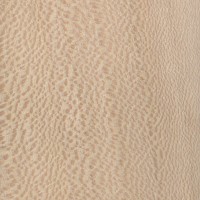 |
Common Name(s): Sycamore, American Plane Scientific Name: Platanus occidentalis Distribution: Eastern United States Tree Size: 75-120 ft (23-37 m) tall, 3-8 ft (1-2.4 m) trunk diameter Average Dried Weight: 34 lbs/ft3 (545 kg/m3) Specific Gravity (Basic, 12% MC): .46, .55 Janka Hardness: 770 lbf (3,430 N) Modulus of Rupture: 10,000 lbf/in2 (69.0 MPa) Elastic Modulus: 1,420,000 lbf/in2 (9.79 GPa) Crushing Strength: 5,380 lbf/in2 (37.1 MPa) Shrinkage: Radial: 5.0%, Tangential: 8.4%, Volumetric: 14.1%, T/R Ratio: 1.7 |
Color/Appearance: Similar to maple, the wood of Sycamore trees is predominantly comprised of the sapwood, with some darker heartwood streaks also found in most boards. (Though it is not uncommon to also see entire boards of heartwood too.) The sapwood is white to light tan, while the heartwood is a darker reddish brown. Sycamore also has very distinct ray flecks present on quartersawn surfaces—giving it a freckled appearance—and it is sometimes even called “Lacewood.”
Grain/Texture: Sycamore has a fine and even texture that is very similar to maple. The grain is interlocked.
Endgrain: Diffuse-porous; small to medium pores, numerous; solitary and in radial multiples and clusters; tyloses occasionally present, though not easily seen with lens; growth rings distinct due to lighter color of latewood and decreased pore frequency; medium to very wide rays easily visible without lens, noded, wide spacing; parenchyma rare or absent.
Rot Resistance: Sycamore is rated as non-durable to perishable regarding decay resistance, and is susceptible to insect attack.
Workability: Overall, Sycamore works easily with both hand and machine tools, though the interlocked grain can be troublesome in surfacing and machining operations at times. Sycamore turns, glues, and finishes well. Responds poorly to steam bending.
Odor: No characteristic odor.
Allergies/Toxicity: Besides the standard health risks associated with any type of wood dust, no further health reactions have been associated with Sycamore. See the articles Wood Allergies and Toxicity and Wood Dust Safety for more information.
Pricing/Availability: Usually moderately priced, though Sycamore is commonly sold as quartersawn boards, which can increase the cost.
Sustainability: This wood species is not listed in the CITES Appendices or on the IUCN Red List of Threatened Species.
Common Uses: Veneer, plywood, interior trim, pallets/crates, flooring, furniture, particleboard, paper (pulpwood), tool handles, and other turned objects.
Comments: Not to be confused with European Sycamore—which is actually just a species of maple (Acer pseudoplatanus)—Sycamore is sometimes referred to as “American Plane” in Europe.


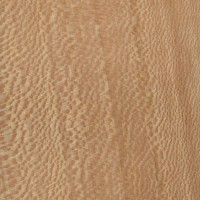
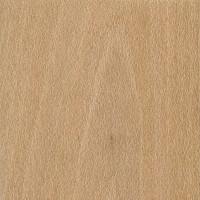
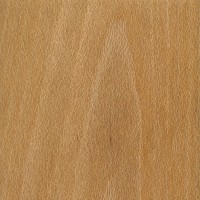
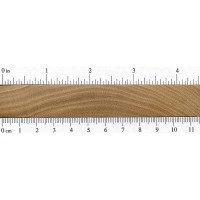
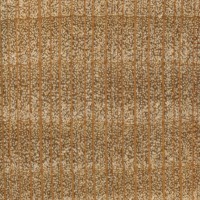

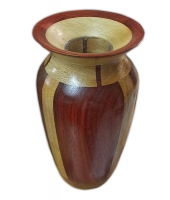
My aunt has an enormous American sycamore on her property. Took six Girl Scouts holding hands to circle trunk 40 years ago. Would this tree possibly be hollow?
Grandfather, used to say all large sycamores become hollow. Would it be worth exploring making lumber?
Thankfully, not near any buildings. Thank you.
Most big sycamore trees are hollow. I’ve been inside one that you could overwinter if lost in the woods safely.
There is no reason to assume all large sycamore trees are hollow. We harvested one about 10 years ago that was being removed as part of a construction project. It was about 48″ diameter and about 80′ feet tall with about 30′ of clear trunk at the base and it was solid throughout.
What kind of wood pairs best with sycamore?
Are you looking for contrast or similarity? I like the combination of black cherry and sycamore, myself… or black walnut and sycamore.
Sycamore has a very distinct odor.
Are you talking about the dried wood, or when it is still wet?
It absolutely does. When it is being worked/ cut, it has a pleasant sweet smell, akin to fresh cut hay.
Statton Furniture Company used Sycamore in the 1950’s for their Statton Modern line designed by Russel Wright. They noted problems with twisting and warping at the manufacturing stage. Drop leaf tables from the series have a tendency to warp, they are 3/4 thick edge-glued planks with little bracing. But the wood itself is lovely, although the grain is rather hidden under a blond (lacquer/paint mix) finish.
If anyone would like to see what can be sone with Sycamore look at https://www.gilesnewman.com/shop/lily-of-the-valley-pendant
The man is a true artist.
As this is a pendant from UK (notice it’s sold for pounds not dollars) the wood is likely not the same Sycamore, but a Maple. Sycamore in the USA is Planatus Occidentalis, but in UK it is Acer Psuedoplanatus. Acer is the Maple Family and Planatus is the plane tree or sycamore family. Different species trees and the maple wood is MUCH harder, likely double in strenth, with a tighter grain pattern.
A pendant that intricate would likely not last too long if made of true sycamore. It’s a wonderful piece though.
can you still sap a Planatus Occidentalis? right? my friend has 5 120′ tall huge OLD trees next to a flowing creek in Southern California. when, if possible would you try and get sap? Thanks in advance
You can, although it won’t taste anything like maple sap.
In the summer of 1996, my husband acquired a Sycamore sapling from a lovely woman on Beech Street in Amherst Massachusetts. We planted this tree in our dirt floor basement, watering it regularly and allowing sunlight through small windows. Recently, our sycamore tree has grown far too tall for our basement to stand. Our first floor kitchen tiles are cracking, and I’m not sure how much longer I’ll be able to stand working in that kitchen. If I get my lawn boy to cut off the top branches of the tree, will it survive? My husband passed away in 2011,… Read more »
Why don’t you cut it at the base and keep the tree but no longer growing. That way you can keep the tree as a rememberenace but not lose your house. It won’t be the same as a living tree, Obviously, but you won’t lose your kitchen either…
Dear Sophia,
My wife passed away recently as well. I’m very sorry to hear your loss, but it’s all down easyhill from here. As for the tree, I would suggest burning it. Set a circle of water pails around it, so that the surrounding house does not catch aflame. The sooner you let your husband and tbe tree go, the better. You can always plant a new tree. Best wishes, Barry
American Sycamore is a deadly, dangerous tree. My neighbor had one about 125′ tall & 6-8′ in diameter. It dropped a limb about 2′ in diameter & 40′ long one day without warning. The limb crushed his shed he had just walked out of. No strong winds, heavy rains, or any other weather related causes whatsoever. It just snapped & dropped. They estimated the limb to weigh 2 tons (4000 pounds).
I wouldn’t have an American Sycamore anywhere near any structure I valued, especially my house.
It is beautiful wood & makes really nice bowls though.
We have a neighbor who planted two of these trees right on the property line on a little 9200 sq foot city lot. They do not have the room to grow and are half growing on our property. Currently the limbs over reach our roof and we do get winds. Would it be OK if I had your neighbors number so I could get a statement from him or her about what happened without warning? I would really like to build the case as hazard trees and have them removed. They are about half grown and we removed the roots… Read more »
Sycamore isn’t the only tree that does that. Most trees do it at that age and size, oaks, maples and willows.
This is common for many specimen trees (grown far from neighboring trees). Specimen trees are often very beautiful due to the low and wide branching structure. However, this same structure makes them much less stable and sturdy compared to forest bound trees which grow more upright. As an added bonus trees planted in a forest like cluster or stand form an interlocking root system which makes the trees much more difficult to knock over in the wind compared to one big lonely tree.
Has anyone ever carved sycamore wood or used it for spoons? The electric company just came and took down a 70+ foot sycamore tree on my property (which made me sick). I don’t want to just cut it up for firewood but I don’t do any woodwork except novice carving.
Never carved it, but I’d anticipate that it’d behave pretty similar to soft maple, though it does have interlocked grain, and it tends to warp and deform a fair amount as it dries, so you’d need to take that into account. I think if you oriented the grain with the ray fleck on the face of the spoon (quartersawn) it would make a pretty nice piece. Just my .02
Yes Turn it into bowls etc.
Sycamores are common lawn trees where I live in Northern California. However, large limbs have a tendency to fall during our hot, dry summer months. This makes them dangerous to live near but they’re a a ready source of excellent spoon carving wood for scavengers. The heartwood is orange colored and the sapwood is white. I’ve carved spoons from newly felled tree limbs and they are easy to work and relatively light weight.
I do not know how Sycamore does. I have never messed with it. that said, the storms took out some larger branches at my job and when I was leaving today a man had it all cut in pieces and loaded on his truck. He helped me load a nice log into my prius. I have dragged it into my greenhouse to slowly dry out. turns out, that is a great place to dry wood when you need it to dry slow and even – Once it is dry we will see what we have. It should be ok even… Read more »
I think quarter-sawn Sycamore is one of the most beautiful domestic woods we have here in the US. , on par with the beauty of many exotics. I also have heard the arguments about the wood not being very stable during the drying process , or even in service ,but I have not experienced many problems with this wood, FYI , sycamore was once used extensively as a secondary wood for furniture making ( ie, drawer sides ect.).
I have a very large one right beside my house growing under my foundation and it is also holding up my retaining wall :) Know it’s probably ruining my plumbing under my slab but afraid my whole house will slide over if I remove it :)
A rather old name for this tree is “buttonwood”.
I’ve been told that sycamore is one of the most dimensionally stable domestic hardwoods, i.e. that once it is milled up to its final dimensions for your project the amount it will twist, cup, or bow throughout the seasons is very low compared to other species. As such I’ve used sycamore scraps for jigs that need to stay square or as a sacrificial fence on the miter gauge since it will maintain its shape more readily than other species. From my experience it is indeed very dimensionally stable. How does this square with the Tallgrass Custom Wood Products’ comment? I… Read more »
i have a few sycamore logs i’ve gathered up and like someone said previously, it dries very quickly, especially here on the edge of the Mojave desert. all of my logs split right down the middle during the drying process, even with the ends sealed. the way it split and twisted, i would really only trust this wood for something that didnt really matter. yes it’s very pretty when quartersawn, and should make a couple of nice benches for my front yard, ironically, right under my sycamore tree. if they twist or split too much after i put them in… Read more »
Funny; I have a full cord of 4/4 quartered sycamore planks in my barn that show no evidence whatever of visible movement (including splitting) with humidity changes. They’ve been in my barn for about a year now. They were stickered for drying before I bought them, so they never took on any initial warm during the most important part of the drying process.
I plan to use them for high-visibility cabinet door frames and other trim in my house.
Diff’rent strokes.
We’re investigating patio umbrellas and some proudly point out they use sycamore poles while others go with beech … which is going to be better given the bending forces a 13 foot diameter umbrella has to put up with?
Are you in the US or UK? Sycamore means different things depending on where you’re at. In the UK, sycamore is a type of maple. Either way, my money would be on the Beech to outperform the “sycamore.”
Beech is a terrible wood for outdoors. It’s very stable and strong when used indoors but twists and turns and cups in any imaginable way when exposed repeatedly to dry/wet cycles. This causes any finish to peel off, and rot and mold to set in.
Very few woods, when used outdoors, should ever get a film finish. Penetrating finish, yes… even raw linseed oil… but not a film finish.
One of the few that can tolerate a film finish outdoors would be mazanita. Certain mahoganies can, too.
I disagree, there are spar urethanes and other flexible marine-type exterior finishes that are meant to be flexible and UV resistant and will give the best protection for the wood. But I would also add that it depends on your expectations. If you are trying to preserve the color and initial state of the wood in question, you will need to maintain the finish with regular reapplications. But even on unfinished or otherwise rot-resistant woods, I will even add a thick coating of wood glue (or clear epoxy) to the endgrain of things like posts or legs because it forms… Read more »
Whereas spar urethanes and other spar varnishes are often used in marine (and other) applications to help protect against direct water intrusion, the film finish is far from optimal unless the wood can be kept in an approximately constant state of humidity in order to prevent the shrinkage associated with drying and the expansion associated with gaining moisture content; film finishes generally cannot expand and contract nearly as profoundly as most woods can with changes in moisture content; they crack and peel, exposing that wood to progressively greater and greater moisture content swings, each damaging the film finish worse than… Read more »
Can anyone respond concerning sycamore’s tendency to twist/cup/bow? I will be milling some sycamore for the first time for a customer who plans to install it as flooring, and I’d like to be able to tell him more about it. However, I’ve never milled sycamore.
Just sticker it well while it’s drying and it’ll be stable after it’s dry.
I’m not sure I’d use it for floors, though; it’s not terribly hard.
started turning a small bowl in sycamore figured ripple and small holes and groove style holes appearwd inside the wood. Can anyone tell me what this is please
Photos, please? So we aren’t wild-guessing?
Sycamore definitely has a characteristic odor while being machined, in my experience. The odor is reminiscent of a wet dog.
Sounds like elm.
I recently got some quartersawn sycamore for a largish project–stair rail with tree silhouettes in 4 species, also including qs white oak, curly cherry, and ash. Top rail and trim are walnut. The ray pattern on the sycamore is spectacular. But, John is right, it stinks when worked. I’m a veterinarian and would say it smells like a barnyard. But, like other beautiful things, once you get past the smell, you’ve got it licked. (Definitely not elm!) Note that there are certain tastes, like urea, which some people have receptors for, and some don’t–may be the same with smells.